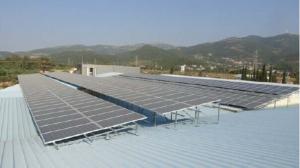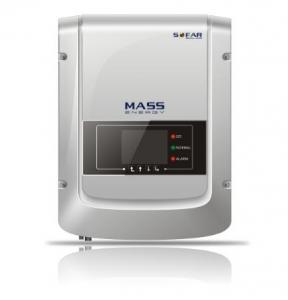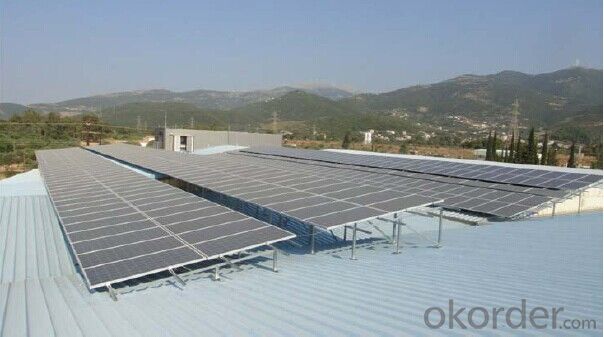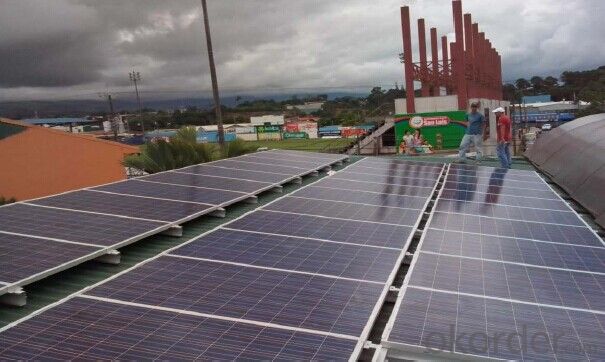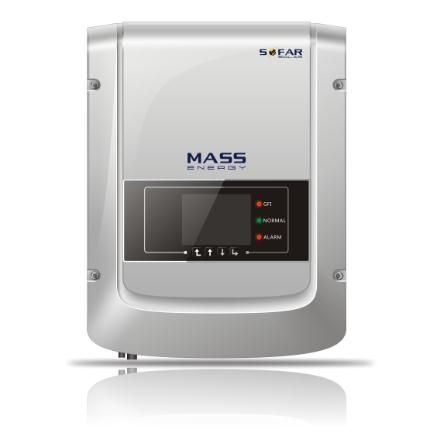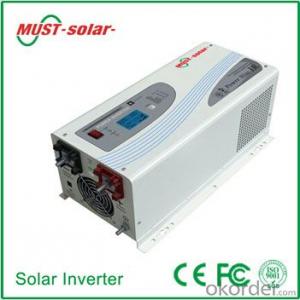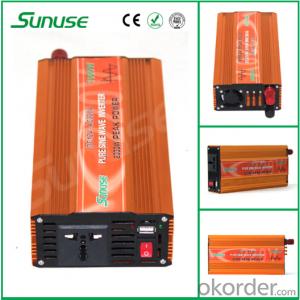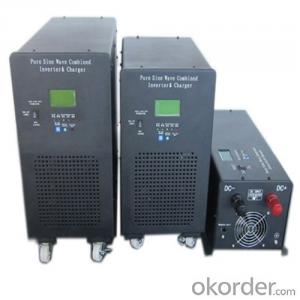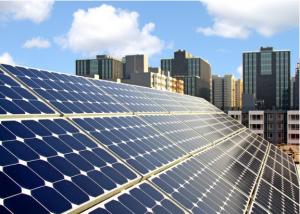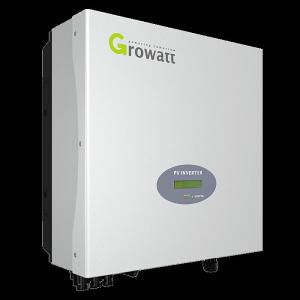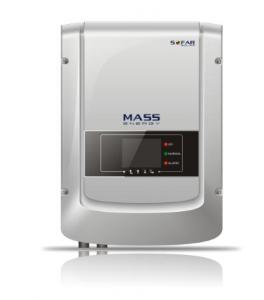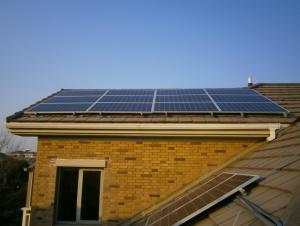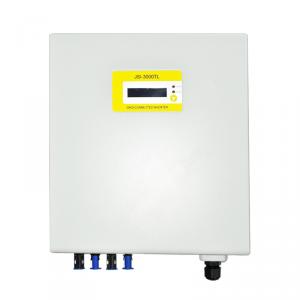240 Volt PV Grid-Tied Solar Inverter 3000TL Competitive Price
- Loading Port:
- Shekou
- Payment Terms:
- TT or LC
- Min Order Qty:
- 10 unit
- Supply Capability:
- 99999 unit/month
OKorder Service Pledge
OKorder Financial Service
You Might Also Like
PV Grid-tied Solar Inverter 3000TL Competitive Price
High-yield
•Max 97.1%efficiency
•Real timeprecise MPPT algorithm for max harvest
•Wide inputvoltage operation range from 90V to 500V
All in one. Flexible and economicalsystem solution
•Free siteselection due to IP65
•Easy installationand maintenance due to “Plug & Play” connection
•Interfaceselection-Wi-Fi/ RS485 / Dry Relay for more flexible
•configurationandsystem monitoring
•4” LCDdisplay
PV Grid-tied Solar Inverter 3000TL
Low maintenance cost
•Rust-freealuminumcovers
•Flexiblemonitoring solution
•Multifunctionrelay can be configured to show various inverter information
Intelligent gridmanagement
•Reactivepowercapability
•Self powerreduce when over frequency
•Remoteactive/reactivepower limit control
PV Grid-tied Solar Inverter 3000TL Datasheet
Technical Data | SOFAR 1100TL | SOFAR 1600TL | SOFAR 2200TL | SOFAR 2700TL | SOFAR 3000TL | |
Input (DC) | ||||||
Max. Input Power | 1100W | 1600W | 2200W | 2700W | 3000W | |
No. of MPPT / String per MPPT | 1/1 | |||||
Max. Input voltage | 450V | 450V | 500V | 500V | 500V | |
Max. Input Voltage | 80V | |||||
Rated input voltage | 360V | |||||
Operating input voltage range | 90V-400V | 100V-480V | ||||
MPPT voltage range | 110V-380V | 165V-380V | 170-450V | 210-450V | 230V-450V | |
Max. Input current per MPPT | 10A | 13A | ||||
Input short circuit current per MPPT | 12A | 15A | ||||
Output(AC) | ||||||
Rated power(@230V,50Hz) | 1000VA | 1500VA | 2000VA | 2500VA | 2800VA | |
Max. AC power | 1000VA | 1500VA | 2000VA | 2500VA | 2800VA | |
Max. AC Output Current | 4.5A | 7A | 9.5A | 11.5A | 13A | |
Rated Grid Voltage | 230V | |||||
Nominal Grid Voltage Range | 180V-270V(According to local standard) | |||||
Rated Frequency | 50Hz / 60Hz | |||||
Grid frequency Range | 44~55 / 54~66Hz(According to local standard) | |||||
THDi | <3% | |||||
Power factor Adjustable Range | 0.8 over excited … 0.8 under excited | |||||
Grid connection | Single phase | |||||
Efficiency | ||||||
Max. efficiency | 97% | 97.1% | ||||
Weighted eff.(EU/CEC) | 96% | 96.2% | 96.3% | |||
MPPT efficiency | >99.5% | |||||
Standard | ||||||
EMC | EN 61000-6-1, EN 61000-6-2, EN 61000-6-3, EN 61000-6-4 | |||||
RSSR | IEC 62109-1, IEC 62109-2 | |||||
Grid Standards | AS4777, VDE4105, C10-C11, G83/G59 (more available on request) | |||||
Protection | ||||||
Anti-Islanding Protection | Yes | |||||
DC reverse polarity protection | Yes | |||||
Over Temp Protection | Yes | |||||
Leakage Current Protection | Yes | |||||
Over Voltage Protection | Yes | |||||
Over Current Protection | Yes | |||||
Earth Fault Protection | Yes | |||||
Communication | ||||||
Standard Communication Mode | Wifi+RS485 | |||||
Operation Data Storage | 25 years | |||||
Relay | Yes | |||||
I/O | Yes | |||||
General data | ||||||
DC Switch | optional | |||||
Ambient temperature range | -25℃ ~ +60℃ | |||||
Topology | Transformerless | |||||
Cooling | Nature | |||||
Allowable relative humidity range | 0 ~ 95% no condensing | |||||
Max. Operating Altitude | 2000m | |||||
Noise | <35dB @1m | |||||
Degree of Protection (per IEC 60529) | IP65 | |||||
Dimension | 400*310*130mm | |||||
Weight | 11kg | 12kg | ||||
Self-consumption at night | 0 | |||||
Display | Graphic display | |||||
Warranty | 5 years | |||||
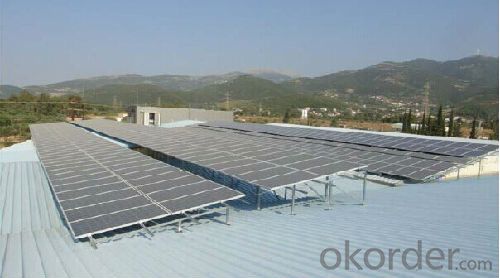
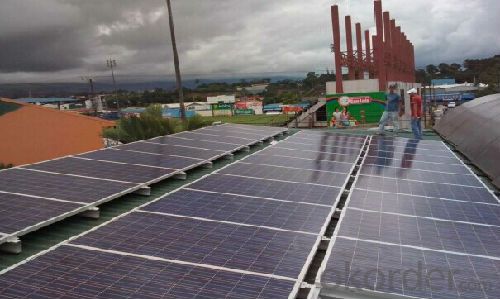
- Q: Can a solar inverter be used with a solar-powered educational system?
- Yes, a solar inverter can be used with a solar-powered educational system. A solar inverter is responsible for converting the direct current (DC) produced by solar panels into alternating current (AC) that can be used to power electrical devices. In the case of a solar-powered educational system, the solar inverter plays a crucial role in converting the DC energy generated by the solar panels to AC energy that can be utilized by the educational equipment, such as computers, projectors, or other electrical devices, thereby enabling the system to function efficiently.
- Q: Can a solar inverter be used in mobile or portable solar systems?
- Yes, a solar inverter can be used in mobile or portable solar systems. Portable solar systems often include a solar panel, battery, and inverter to convert the DC (direct current) power generated by the solar panel into AC (alternating current) power that can be used to power various devices and appliances. The inverter helps ensure compatibility and usability of the generated solar power in these mobile or portable setups.
- Q: Can a solar inverter be used in a solar-powered street lighting system?
- Yes, a solar inverter can be used in a solar-powered street lighting system. The solar inverter is responsible for converting the direct current (DC) generated by the solar panels into alternating current (AC) that is required to power the street lights. It ensures that the energy produced by the solar panels is efficiently utilized in the lighting system.
- Q: What is the maximum operating altitude for a solar inverter?
- The maximum operating altitude for a solar inverter can vary depending on the specific model and manufacturer. However, most solar inverters are designed to operate effectively up to an altitude of around 2,000 meters or 6,500 feet above sea level. It is important to consult the manufacturer's specifications for the specific model to determine the exact maximum operating altitude.
- Q: Can a solar inverter be used with a solar-powered security system?
- Yes, a solar inverter can be used with a solar-powered security system. A solar inverter is essential for converting the direct current (DC) generated by solar panels into alternating current (AC) that can be used to power electrical devices, including security systems. By using a solar inverter, a solar-powered security system can efficiently utilize solar energy and ensure uninterrupted operation.
- Q: How do you monitor the performance of a solar inverter?
- To monitor the performance of a solar inverter, several methods can be employed. Firstly, real-time monitoring systems can be installed that collect data on various parameters such as power output, voltage, current, and temperature. These systems often include data loggers or communication modules that transmit the information to a central monitoring station or cloud-based platform. Additionally, regular inspections and maintenance checks can be conducted to visually inspect the inverter for any signs of damage, loose connections, or overheating. Monitoring the inverter's efficiency over time, comparing the actual power output with the expected output based on solar irradiance and temperature, can also provide insights into its performance. Furthermore, some solar inverters come with built-in monitoring capabilities, allowing users to access performance data through a web-based interface or mobile app. This provides real-time and historical data, including energy production, system faults, and alerts, enabling users to identify and address any issues promptly. Overall, a combination of real-time monitoring systems, regular inspections, and utilizing inverter-specific monitoring features can effectively monitor the performance of a solar inverter.
- Q: Can a solar inverter be used in regions with high levels of air pollution?
- Yes, a solar inverter can be used in regions with high levels of air pollution. Air pollution does not directly impact the functioning of a solar inverter. However, it is important to regularly clean and maintain the solar panels to ensure optimal performance, as air pollution can accumulate on the surface of the panels and reduce their efficiency.
- Q: How is a solar inverter connected to the solar panels?
- A solar inverter is connected to the solar panels through a direct electrical connection. The DC (direct current) electricity generated by the solar panels is fed into the inverter, which then converts it into AC (alternating current) electricity suitable for use in homes and businesses.
- Q: Can a solar inverter be used with a solar-powered heating system?
- Yes, a solar inverter can be used with a solar-powered heating system. A solar inverter converts the DC power generated by solar panels into AC power that can be used for various applications, including heating systems. By connecting the solar inverter to the solar panels and the heating system, the generated solar power can be efficiently utilized to provide heat for the system.
- Q: How does a solar inverter handle voltage and frequency regulation?
- A solar inverter handles voltage and frequency regulation by converting the direct current (DC) generated by solar panels into alternating current (AC) that is suitable for use in homes and businesses. It ensures that the voltage and frequency of the AC output are within the acceptable range set by the grid or electrical appliances. This is achieved through the use of control circuitry and algorithms that continuously monitor and adjust the DC input to maintain a stable and consistent AC output.
Send your message to us
240 Volt PV Grid-Tied Solar Inverter 3000TL Competitive Price
- Loading Port:
- Shekou
- Payment Terms:
- TT or LC
- Min Order Qty:
- 10 unit
- Supply Capability:
- 99999 unit/month
OKorder Service Pledge
OKorder Financial Service
Similar products
Hot products
Hot Searches
Related keywords
